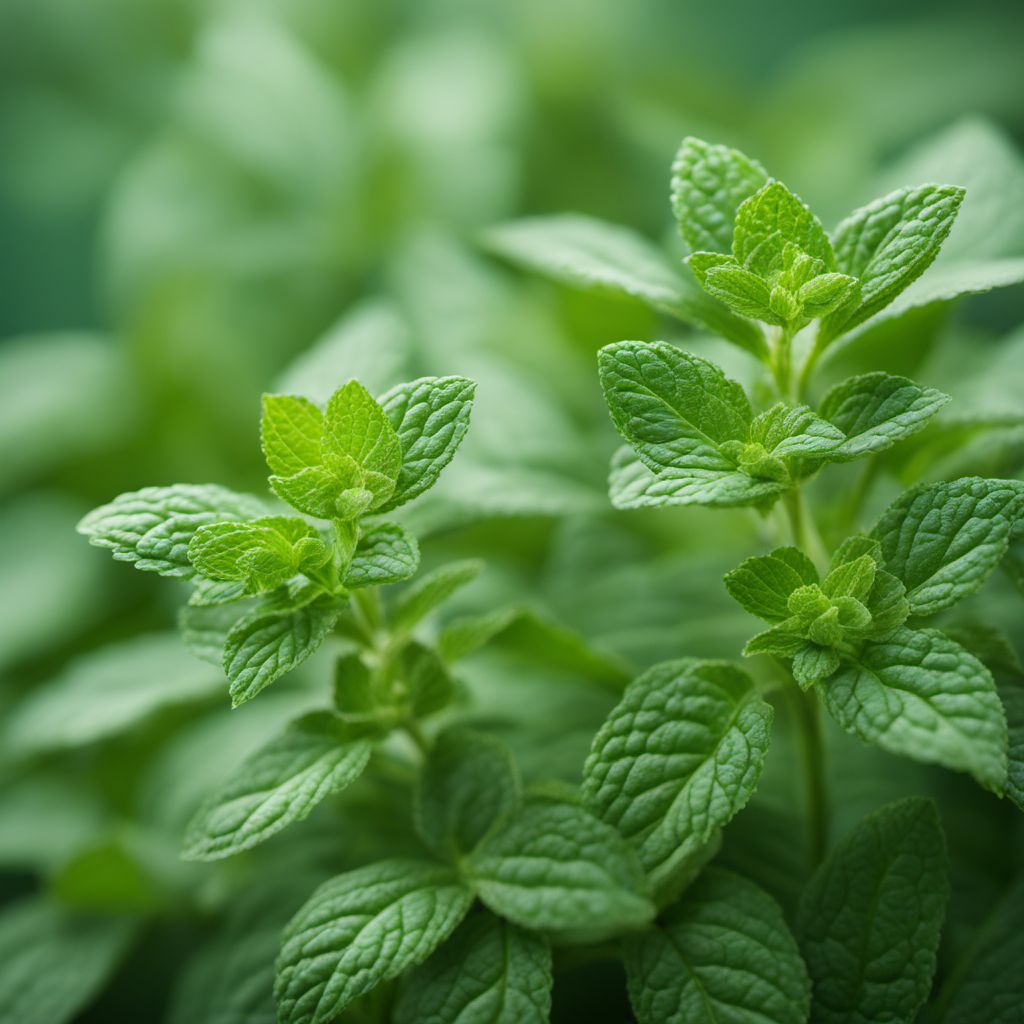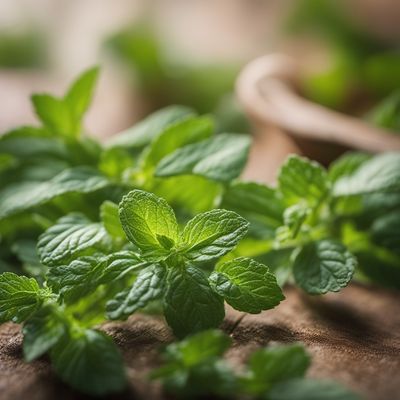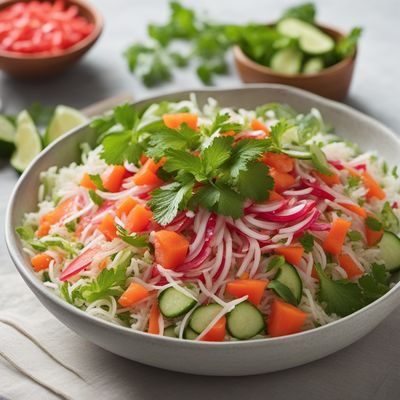
Ingredient
Spearmint
"The Refreshing Herb: Unveiling the Delights of Spearmint"
Spearmint, scientifically known as Mentha spicata, is a perennial herb that belongs to the mint family. It features vibrant green leaves that are slightly serrated and emit a delightful aroma when crushed. With a milder flavor compared to peppermint, spearmint offers a refreshing and cooling sensation on the palate. Its texture is tender and delicate, making it a popular choice for both culinary and medicinal purposes. The appearance of spearmint adds a touch of vibrancy to any dish or beverage, making it visually appealing as well.
Origins and history
Spearmint has a long history dating back to ancient times. It is believed to have originated in the Mediterranean region and was later introduced to other parts of Europe, Asia, and North America. The ancient Greeks and Romans highly valued spearmint for its medicinal properties and used it to freshen breath, aid digestion, and relieve headaches. Throughout history, spearmint has been used in various cultures for culinary purposes, such as flavoring teas, desserts, and savory dishes.
Nutritional information
Spearmint is low in calories and a good source of vitamins A and C, as well as minerals like iron and manganese. It also contains antioxidants and has been associated with potential health benefits, including improved digestion and reduced inflammation.
Allergens
Spearmint is generally considered safe and does not commonly cause allergies. However, individuals with a known allergy to mint or other herbs in the Lamiaceae family should exercise caution.
How to select
When selecting spearmint, look for fresh, vibrant leaves that are free from wilting or discoloration. Avoid leaves that appear yellow or brown, as they indicate age or poor quality. Opt for organically grown spearmint whenever possible to ensure the absence of pesticides or chemical residues.
Storage recommendations
To prolong the freshness of spearmint, store it in a plastic bag or airtight container in the refrigerator. Alternatively, you can place the stems in a glass of water, covering the leaves with a plastic bag, and refrigerate. Properly stored, spearmint can last up to a week.
How to produce
Spearmint can be easily grown at home by planting seeds or purchasing young plants from a nursery. It thrives in well-drained soil and prefers partial shade. Regular watering and pruning will help maintain its growth and flavor.
Preparation tips
Spearmint leaves can be used whole or chopped, depending on the recipe. They can be added to salads, beverages, sauces, and marinades to impart a refreshing flavor. Spearmint is commonly used in Middle Eastern, Mediterranean, and Asian cuisines, adding a delightful twist to dishes like tabbouleh, tzatziki, and Vietnamese spring rolls. It can also be brewed into a soothing tea or used as a garnish for desserts.
Substitutions
If spearmint is not available, you can substitute it with peppermint, which has a stronger flavor profile. Alternatively, you can use a combination of fresh mint leaves and a small amount of lemon zest to achieve a similar refreshing effect.
Culinary uses
Spearmint is widely used in both sweet and savory dishes. It is commonly incorporated into beverages like mojitos, mint juleps, and herbal teas. In cooking, spearmint adds a burst of freshness to salads, dressings, sauces, and marinades. It pairs well with lamb, peas, strawberries, and chocolate, enhancing their flavors with its unique profile.
Availability
Spearmint is cultivated and readily available in various regions around the world, including Europe, Asia, North America, and the Mediterranean.
More ingredients from this category

Gingermint
The Perfect Blend of Zesty Ginger and Refreshing Mint

Pennyroyal
The Versatile Herb: Pennyroyal

Bergamot mint
The Citrus Twist

Other species and hybrids of genus Mentha, not elsewhere mentioned
The Aromatic Herb Family

Peppermint
The Refreshing Herb: Peppermint

Apple mint
Refreshing Minty Twist

Corsican mint
"The Refreshing Delight: Discover the Aromatic Magic of Corsican Mint"

Water mint
"Refreshing Twist: Exploring the Delights of Water Mint"
Recipes using Spearmint

Mediterranean Sushi Rolls
Mediterranean Fusion Rolls

Refreshing Mariana Islands Dongchimi Salad
Tropical Twist: Mariana Islands Dongchimi Salad

Greek-style Spinach and Feta Pierogi
Mediterranean Delight: Spinach and Feta Stuffed Greek Pierogi

Cypriot-style Potato Salad
Mediterranean Delight: Cypriot-style Potato Salad

Refreshing Yogurt and Cucumber Dip
Cooling Delight: A Refreshing Twist on Turkish Cacık

Turkish-style Beef Bourguignon
Istanbul Beef Stew

Madrid-style Grilled Eggplant Salad
Smokey Eggplant Delight: A Madrid Twist on Grilled Eggplant Salad